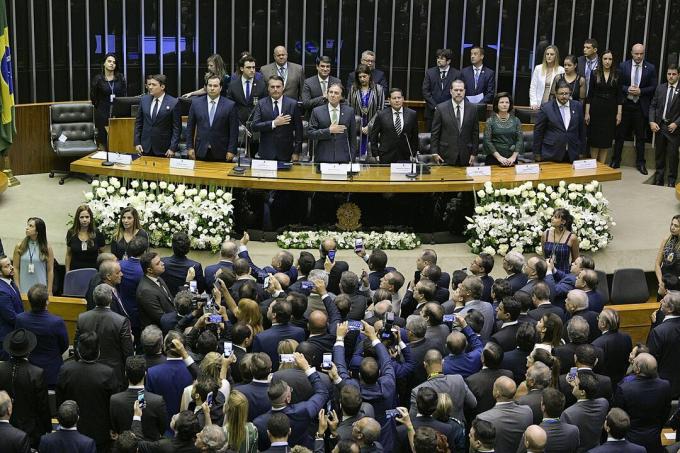Structural racism refers to the set of institutional practices and social, economic and political relations that privilege one ethnic group over another.
It is the structures of society that directly or indirectly promote racial prejudice and contribute to perpetuating inequalities.
Structural racism in Brazil has its origins in the process of enslavement of the African population brought from the 16th century by Portuguese colonizers.
This structural condition of racism results in the maintenance and intensification of exclusion, lack of opportunities, violence and poverty in the black population.
Structural racism in Brazil
Structural racism originates with slavery
From the 16th century onwards, the Portuguese brought about 5 million blacks from the African continent to work as slaves in the dominated lands.
Slavery took place between the 1550s and 1888 and throughout this period the enslaved population was subjected to a barbaric regime of violence and forced labor.
The end of slavery did not end the social exclusion of blacks
Even with the end of slavery in 1888, the black population did not have the right to enter society. They remained without access to land, education or work.
One of the examples was the 2nd official act of the Complementary Law to the Constitution of 1824, which prohibited blacks from attending schools, as they were “sick of contagious diseases”.
The lack of opportunities for blacks after their liberation led this population to criminality or to the exercise of menial and low-paid activities...
Racial theories justified the maintenance of racism
The domination of whites over blacks was based on scientific theories that tried to prove the physical and mental inferiority of blacks.
These theories spread among Brazilian intellectuals from the 19th century onwards and provided a justification for maintaining the marginalization of blacks in society even after the end of slavery.
European immigration and the attempt to "whiten" the population
With the end of slavery, laws were created to bring workers to Brazil. There was an attempt to promote the "whitening" of the population, offering privileges to European immigrants.
Decree No. 528 of 1890 opened the gates of Brazil to immigration, with the exception of “indigenous people from Asia and Africa”.
Many European immigrants received land and benefits from the Brazilian state to settle in the country. Blacks, who were already in Brazilian territory, did not receive such privileges.
Racism intensified social inequalities
These centuries of exclusion allowed the very structures of society's functioning to promote the continuity of racism and the maintenance of the black population on the margins of society.
As a result of these years of exclusion, the black population in Brazil has more difficulty in accessing the job market, studying opportunities and professional qualification.
On the other hand, blacks in Brazil are the biggest victims of homicide, femicide, violence and illiteracy. Due to the lack of opportunities, they are also the majority of the country's prison population.
Also understand what it is racism.
Examples that reveal structural racism in Brazilian society
Lack of political representation
One of the examples is the very structure of the State's power: despite more than 50% of the Brazilian population declaring themselves black, only 17.8% of the congressmen who make up the Federal Congress are black.
The same is repeated in other spheres: of the state governors elected in 2018, none are black and of the mayors elected in 2016, only 29% were black.
 Plenary of the National Congress.
Plenary of the National Congress.
Lack of representation in television programs
Another example of the reproduction of racism in structures are TV programs. There is little representation of black program hosts and also in the casts of soap operas.
One of the examples was the soap opera "Segundo sol" from 2018, set in Salvador, Bahia, and whose protagonists were all white. According to the 2017 National Household Sample Survey (PNAD), 85% of Salvador's population is black.
The Union of Blacks for Equality filed a lawsuit against the station, claiming that the cast did not represent the population of that city.
Portuguese language words
This inequality is also reflected in cultural aspects such as jokes and words that spread in the Portuguese language of Brazil. Some examples of words that use the term "black" to refer to something negative are:
- denigrate
- Black list
- Black market
Another word used in the Portuguese language is "criado-mudo", the name given to bedside tables. The enslaved peoples used to hold the objects of their masters and could not make noise, so they were called dumb.
Individual, institutional and structural racism
Racism has three different conceptions: individual, institutional and structural. Individual racism refers to attitudes of racial discrimination and prejudice practiced by individuals.
Institutional racism happens when public and private institutions act in a racist way, granting privileges to certain social groups and disadvantages to others.
Structural racism happens when prejudice is normalized in social, economic, cultural and political relationships. In these cases, even if people or institutions are punished for racist acts, this accountability does not reduce social inequalities.
It is for this reason that specialists in racial studies argue that the construction of a less unequal society will only be possible with the end of structural racism.
Check out the books on racism that everyone should read.
